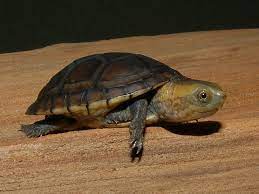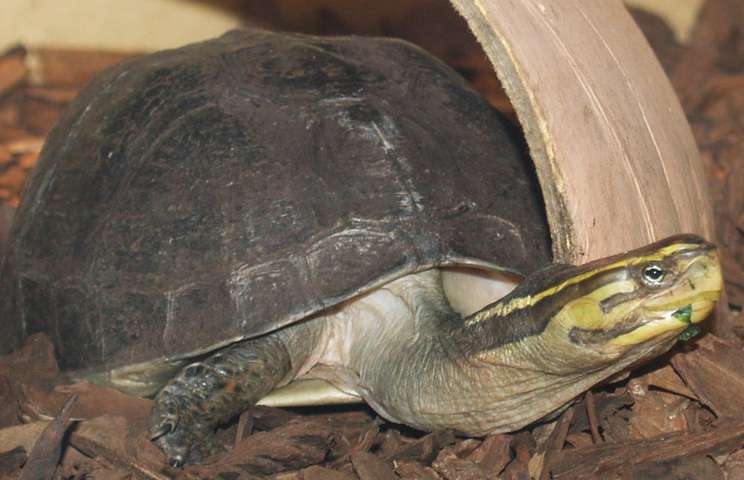
A medium-sized species known as the white-lipped mud turtle lives in parts of Central and South America. They reside in swamps and marshes with silty or sandy bottoms that have slower-moving waters. In the event that the water level drops, they will dig into these substrates.
White-lipped Mud turtles have oval-shaped, black to brown shells. Their jaws and mouths stand out because they are white or cream in hue. They have a little horned spine on their tails. Crepuscular omnivores, white-lipped mud turtles hunt mostly at dawn and twilight for crustaceans, fish, insects, mollusks, worms, and occasionally plant material.
Care as a Pet

Housing
The majority of white-lipped mud turtles’ habitat is water. They mostly live in slow-moving, stagnant freshwater habitats like marshes and swamps. They favour wet environments with sandy, silty bottoms where they can burrow if the water level decreases.
Originating in Central and South America, white-lipped mud turtles can be found in a number of places, including Colombia, Ecuador, Nicaragua, northwestern Peru, and southern Mexico. White Lipped Mud turtles need an aquatic cage, just like the majority of other mud turtle species. An adult Mud turtle can fit comfortably in a 40-gallon tank because they are large for Mud turtles. Consider at least a 55-gallon aquarium for two people. They can also be kept in ponds, but if the pond is susceptible to freezing in the winter, you will need to move them indoors.
Heat
Except when the water will dip below 70 degrees Fahrenheit, mud turtles often don’t need water heaters. Use a thermometer safe for aquariums to monitor the water’s temperature. Your White Lipped Mud turtle’s basking area will require some kind of heat light to replicate the sun. 90 degrees Fahrenheit should be the basking temperature. Additionally, a UVB bulb is necessary for White Lipped Mud turtles in order to provide them with the vital nutrients they would typically acquire from basking. Ideal would be something like a Zoo Med Reptisun 10.0.
Feed
White Lipped Mud turtles are omnivores; thus they don’t have very particular food preferences. Chopped fish or meat strips, commercial turtle pellets, mollusks, crabs, and insects make a tasty meal. Keep your White Lipped Mud turtles from being overfed. You should feed hatchlings once a day if you have any. Two meals per week for adults is more than enough. However, you can provide them with a variety of fresh veggies and dark greens each day. You can use fresh herbs like parsley, collared greens, and dandelion greens. One portion of veggies each week should be sprinkled with a calcium supplement to ensure that your White Lipped Mud turtle receives appropriate dietary support.
Table





